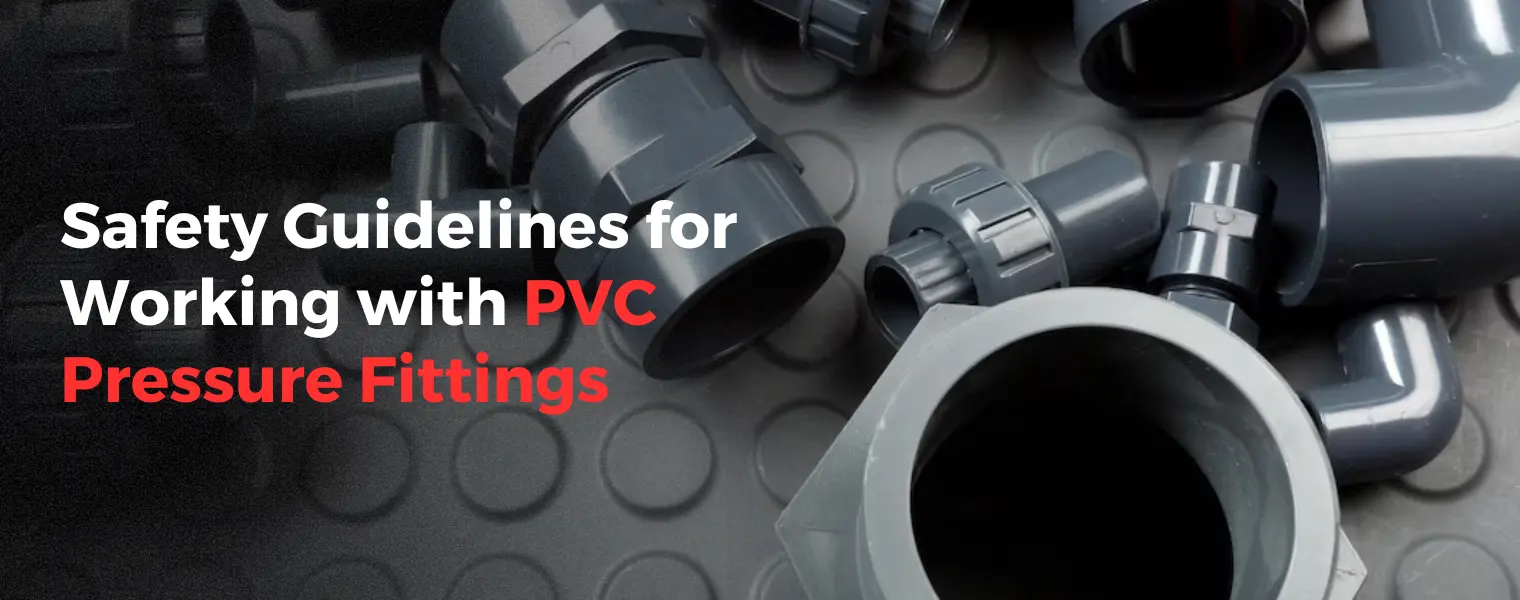
PVC pressure fittings are indispensable components in plumbing and industrial systems. Their versatility, durability, and cost-effectiveness make them a popular choice. However, like any construction material, it's crucial to follow safety guidelines when working with PVC pressure fittings. In this blog post, we'll discuss essential safety tips to ensure that your installations are not only efficient but also safe.
When handling PVC pressure fittings, start with the basics – safety gear. Always wear safety glasses or goggles to protect your eyes from any debris that might be dislodged during the cutting or installation process. Additionally, consider wearing gloves to prevent skin irritation from contact with PVC dust or cement.
PVC cement and solvents can release fumes that, when inhaled, can be harmful. It's essential to work in a well-ventilated area, preferably outdoors, to ensure that you're not breathing in these potentially noxious fumes. If working indoors, use exhaust fans or open windows to maintain proper ventilation.
Ensure that you have the right tools for the job. PVC pipe cutters or hacksaws should be used for cutting PVC pipes. Using improper tools can lead to uneven or jagged cuts, which may compromise the integrity of the fittings.
Always read and follow the manufacturer's instructions for PVC cement and primer. These products are designed to work together for strong, leak-free joints. Applying them incorrectly can weaken connections and lead to leaks.
Confirm that the PVC pressure fittings, pipes, and cement are compatible. PVC comes in different schedules, and it's essential to match the fittings and pipes correctly. Using mismatched components can result in leaks or system failures.
PVC fittings should be tightened until they are snug. Over-tightening can lead to cracks or damage, which can compromise the joint's integrity. When in doubt, consult manufacturer guidelines for torque specifications.
HDPE piping is also a relatively environmentally friendly option for irrigation systems. Even after many years of use, the material is completely recyclable and can be melted down and reformed to create new HDPE products. In addition, unlike some other types of plastic, it does not emit toxic vapours or other compounds at high temperatures.
When cutting PVC pipes, use steady and controlled force. Avoid excessive pressure, as it can cause pipes to splinter or crack unpredictably. Always wear appropriate eye protection during cutting.
Before installation, inspect PVC pressure fittings for defects, cracks, or damage. Damaged fittings should not be used, as they may fail under pressure.
Adequately support PVC pipes to prevent sagging or unintended movement. Horizontal runs, long spans, and areas with multiple fittings may require additional support with hangers, clamps, or straps.
After assembling PVC fittings with cement, allow sufficient time for the joint to cure before pressurizing the system. The curing time varies with temperature and humidity, so consult the cement manufacturer's recommendations.
Properly label pipes and fittings to indicate their contents and function. Clear labeling helps prevent confusion during maintenance or repairs.
Ensure that individuals working with PVC pressure fittings are adequately trained and aware of safety procedures. Knowledgeable personnel are less likely to make mistakes that could lead to accidents or system failures.
Working with PVC pressure fittings can be safe and efficient when you follow these essential safety guidelines. Prioritize protective gear, proper ventilation, and adherence to manufacturer instructions. By taking these precautions, you can ensure that your PVC pressure fitting installations are not only leak-free and reliable but also conducted with the highest regard for safety. Polyfab provides the best PVC pressure fittings Contact us to know more.